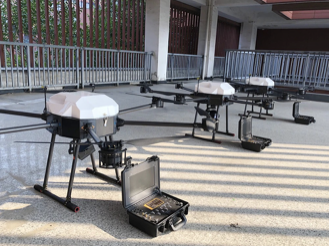VEHICLE HAVING PERSONAL SECURITY DRONE
VEHICLE HAVING PERSONAL SECURITY DRONE
Feb 18, 2025
Innovation has always been the heart of our society, but recently technological trends have followed one another, bringing novelty to a lot of services. One, that is nowadays at the center of political campaigns and that is in everyone's mind is security. Both security of people and property. Drones have been proven to be one of the new efficient ways to tackle this issue. Lately, there has been a browsing of all the possible uses or services that could be paired with drone technology. The latest highlight is security drones that follow vehicles, which offer a level of surveillance and security that traditional methods can't match. The global market for drone security systems reached $10.5 billion in 2023 and is projected to grow, with vehicle-tracking drones playing a key role in these projections. Using drones to follow vehicles means they have to be equipped with cutting-edge GPS tracking and AI-driven software and can autonomously trail vehicles in real-time. These payloads allow continuous protection for everything from valuable cargo to private transportation. So, while drones are often linked to military use, the shift to commercial and civilian use shows they’re more likely to be patrolling your neighborhood than on battlefields. With urban crime rates on the rise in numerous countries across the world, security drones are expected to become an indispensable part of modern safety.


The technology behind the drones is very developed. In fact they can be set with an autonomous flight system and real-time tracking by GPS. This allows the drones to keep an eye on moving vehicles without needing any human intervention. In addition, pairing that with an advanced algorithm driven by AI, can give the ability to the drone to recognize vehicles and at the same time differentiate the different types of vehicles, as well as track their movement, and even recognize suspicious behavior, all while adapting to the environment around them. The drone can follow a vehicle on city streets or highways while adjusting its flight route to maintain a safe distance and avoid collision. A high level of precision is the main success factor for applications like monitoring deliveries, protecting high-value assets in transit, or even tracking stolen vehicles. Highlighting that these drones can operate in various weather conditions and at night, providing 24/7 coverage. The combination of AI and machine learning ensures that these drones don’t just follow vehicles, but also make decisions in real-time to better security efforts.

There are countless applications for vehicle-accompanying drone systems, especially in the logistics industry. These drones could be a solution for good transportation matters. In particular for high-value shipments of cargo, for example. You could picture a drone tailing a truckload of electronics or precious metals, continuously monitoring the route, and providing live footage to a security team, for example. This situation would for sure improve the security of this shipment greatly and could also take the appropriate measures if it ended up being attacked. Moreover, public and governmental safety agencies are introducing this technology while being on pursuits and also to track suspects at long distances. Another exciting application is in the private security sector, where drones could follow luxury vehicles or even be used to safeguard areas like airports or event venues. This could be a way to significantly cut costs since there won’t be as much need for human security patrols. Therefore, increasing the effectiveness of surveillance but also ensuring clients' safety without compromising the safety of others. As rules about how drones can be used become clearer, the future of drones that track vehicles for security looks really promising. These drones could change how we keep public spaces safe and how private security is managed.

Battery power is not a concern on extended operations anymore. As our drones usually have the ability to function for hours on one battery charge, which is sufficient for extended vehicle surveillance, especially in larger or more remote areas. Moreover, advances in battery technology make it more and more feasible, providing more operating options.
In the future, security drones that trail vehicles have great prospects, with new technologies that will enhance their capabilities faster. With the advancement of AI technology, these drones will become smarter. They will have the capability to predict possible threats based on history and patterns. Drones in the near future might not only track cars in real-time but also predict hazardous situations, for example, a car taking a different route than usual or entering a restricted area. The use of 5G technology will be important, enabling drones to more effectively transmit information and communicate with command centers. This will facilitate faster decisions and responses in real-time. Swarm technology can also make many drones work together, covering more space and conducting better surveillance. As drone technology becomes more widespread and regulation stays in step with innovation, we can expect to see these aerial security tools become a normal part of modern safety protocols, offering better protection for everything from public spaces to private property.









